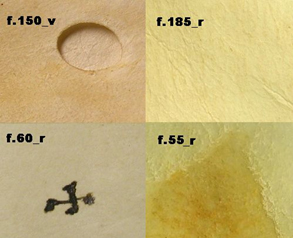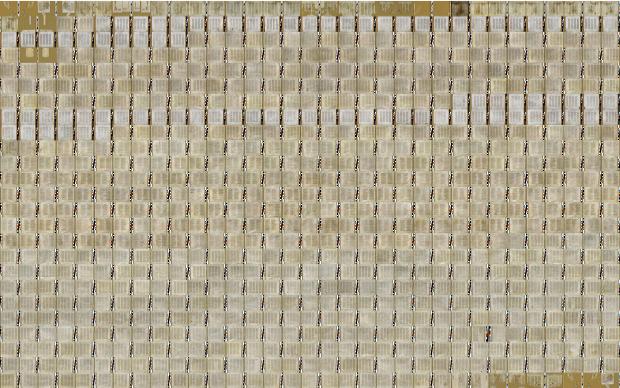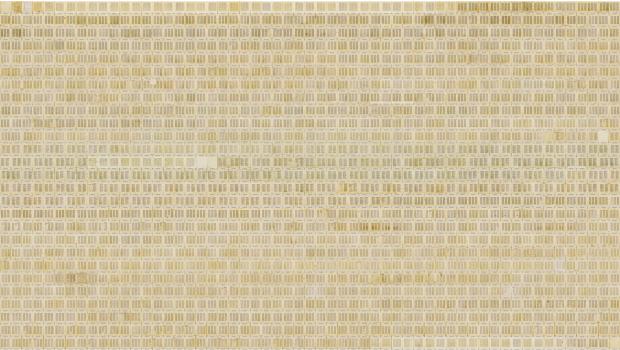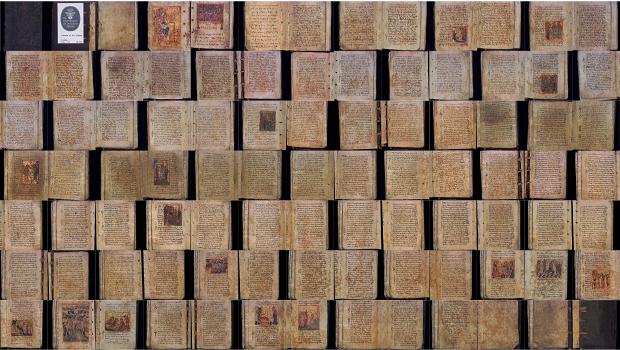

The British Library pages of Codex Sinaiticus not only tend to be darker and yellower than the Leipzig pages, but they are also much more variable in colour.
The Codex Sinaiticus Project website, in a page dedicated to the parchment assessment, presents this composite of four photos to show the variability of colour among the British Library pages.
Amazingly, all four leaves that make up this photo are given the colour code S1010-Y10R in the parchment descriptions in the "See The Manuscript" section of the CSP site!
The Codex Sinaiticus Project website, in a page dedicated to the parchment assessment, presents this composite of four photos to show the variability of colour among the British Library pages.
Amazingly, all four leaves that make up this photo are given the colour code S1010-Y10R in the parchment descriptions in the "See The Manuscript" section of the CSP site!




These questions aside, we have the colour data and we have the photographic data of Codex Sinaiticus. Both sets of data show significant colour variance in the British Library pages and little to none in the Leipzig pages.
Here we have the collage of Codex Sinaiticus page photos. Not only can we see the difference in colour between the Leipzig pages and the British Library pages, but we can also see the variation in page colour within the set of BL pages (between pages) and even great variability within many of the pages themselves (on the same page).
There are three distince "textures" seen in the British Library sections of the collage:
1. Between the Leipzig sections.
2. In the Psalms, where the text is written in two columns.
3. In the New Testament, where the pages are lighter and less variable.
Here we have the collage of Codex Sinaiticus page photos. Not only can we see the difference in colour between the Leipzig pages and the British Library pages, but we can also see the variation in page colour within the set of BL pages (between pages) and even great variability within many of the pages themselves (on the same page).
There are three distince "textures" seen in the British Library sections of the collage:
1. Between the Leipzig sections.
2. In the Psalms, where the text is written in two columns.
3. In the New Testament, where the pages are lighter and less variable.
Next, we can look at a collage of Codex Vaticanus.
First, the pages look much more yellow than those of Codex Sinaiticus.
Second, the great colour variability seen in Sinaiticus is not seen in Codex Vaticanus. The pages at the beginning of Vaticanus and at the ending, are noticeably lighter in colour as is a small section near the middle of the codex. These three sections are replacement pages that are written in minuscule. They are said to be much younger than the bulk of the manuscript. Thus, it would be logical that those pages would be less yellowed than the rest.
First, the pages look much more yellow than those of Codex Sinaiticus.
Second, the great colour variability seen in Sinaiticus is not seen in Codex Vaticanus. The pages at the beginning of Vaticanus and at the ending, are noticeably lighter in colour as is a small section near the middle of the codex. These three sections are replacement pages that are written in minuscule. They are said to be much younger than the bulk of the manuscript. Thus, it would be logical that those pages would be less yellowed than the rest.
Third, we have an example of a known fraud, ms 2427, or "Archaic Mark", once claimed to be penned in the 1400's, but recently proven through chemical testing of inks and pigments to be no earlier than the 1870's.
Like Codex Sinaiticus, Archaic Mark is significantly more variable in colour than Codex Vaticanus.
Like Codex Sinaiticus, Archaic Mark is significantly more variable in colour than Codex Vaticanus.

















